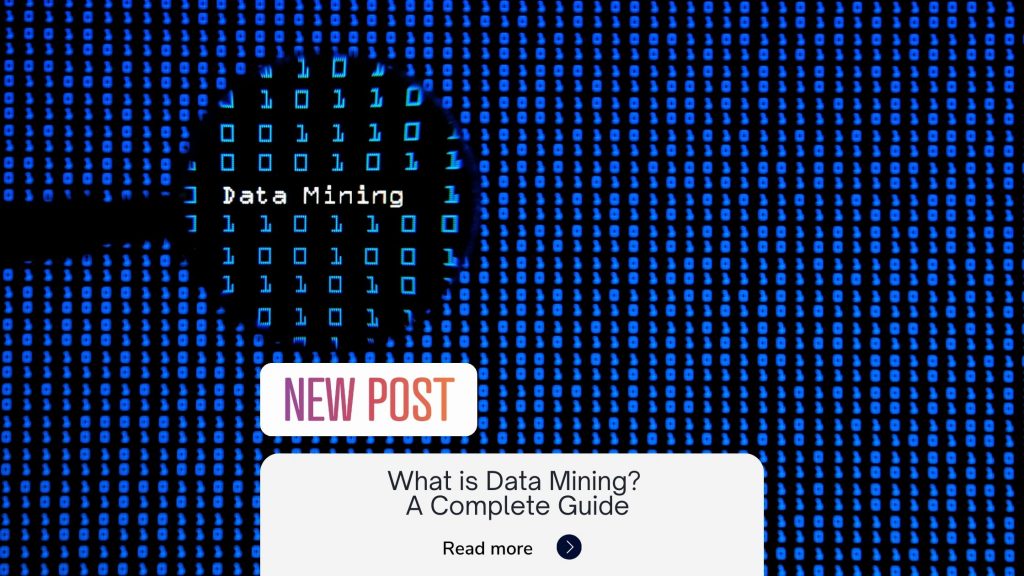Looking for a comprehensive guide to data mining? Look no further! In this blog, we’ll explain what data mining is, the different techniques of data mining, and the benefits and challenges of data mining. By the end, you’ll have a good understanding of this essential business tool.
Introduction
There is a good chance that you have heard the term “data mining” and may have even seen it in movies like The Social Network. But what exactly is data mining? What do data miners do? The truth of the matter is that data miners are IT specialists who look for hidden patterns in large datasets.
These patterns can be used to predict consumer trends, determine the effectiveness of an advertising campaign, or determine the best route to take. It is an important part of today’s digital world.
With an endless supply of data, the question is not whether we can make use of this data―but how? Data mining tools have made our lives easier in a very dramatic way. By mining information, we can make sense of data sets, locate and extract valuable information, and even discover hidden patterns in a matter of minutes. Data mining has brought about a technological revolution that has transformed the way we live and work.
Table of Content
- What is Data Mining?
- What are the steps in Data Mining?
- Benefits & Drawbacks of Data Mining
- Data Mining techniques
What is Data Mining?
Data mining is a process of extracting valuable information from large data sets. It is used to discover trends, patterns, and relationships between data elements. Data mining can be used to generate new business insights, or to optimize existing business processes. It is a powerful tool for business intelligence, and can be used to support decision-making in a wide range of areas, including marketing, finance, and operations.
Data mining is a very important skill that can be used by a variety of different professionals, specifically in the fields of business, marketing and technology. In these areas, data mining can be used to understand consumer and customer interests. This can be used to determine the popularity of certain products or how the customers feel about the business or product. Data mining is so useful that these days it is used in nearly every business.
What are the steps in Data Mining?
Let us understand the various steps involved in a Data Mining process:
1. Understand Business
What is the company’s current situation, the project’s objectives, and what defines success?
2. Understand the Data
Figure out what kind of data is needed to solve the issue, and then collect it from the proper sources.
3. Prepare the Data
Resolve data quality problems like duplicate, missing, or corrupted data, then prepare the data in a format suitable to resolve the business problem.
4. Model the Data
Employ algorithms to ascertain data patterns. Data scientists create, test, and evaluate the model.
5. Evaluate the Data
Decide whether and how effective the results delivered by a particular model will help meet the business goal or remedy the problem. Sometimes there’s an iterative phase for finding the best algorithm, especially if the data scientists don’t get it quite right the first time. There may be some data mining algorithms shopping around.
6. Deploy the Solution
Give the results of the project to the people in charge of making decisions.
Benefits & Drawbacks of Data Mining
Benefits of Data Mining:
Data mining can be extremely beneficial for businesses, as it can help to uncover patterns and trends that may be otherwise hidden. This information can then be used to make better decisions, improve marketing strategies, and ultimately boost profits.
There are many benefits of data mining which have been proven to be beneficial for businesses and organizations. Data mining can help to improve customer satisfaction, optimize marketing campaigns, and improve operational efficiency. Additionally, data mining can help to identify new business opportunities and support strategic decision making. Overall, the benefits of data mining can be extremely helpful for businesses and organizations in a variety of ways.
Drawbacks of Data Mining:
There are a number of potential drawbacks to data mining that should be considered before embarking on any data mining project. These potential drawbacks include the potential for privacy breaches, the potential for inaccurate results, and the potential for misuse of results.
Privacy breaches can occur when data mining is used to gather sensitive information about individuals without their knowledge or consent. Inaccurate results can occur when data mining techniques are not used correctly, or when the data being mined is of poor quality. Misuse of results can occur when data mining is used to make decisions about individuals or groups without taking into account all of the relevant information.
Data Mining techniques
Now let us understand the different Data Mining techniques:
1. Classification:
Classification analysis is used to retrieve important and relevant information about data, and metadata. This data mining method helps to classify data in different classes.
2. Clustering:
Clustering analysis is a data mining technique to identify data that are like each other. This process helps to understand the differences and similarities between the data.
3. Regression:
Regression analysis is the data mining method of identifying and analyzing the relationship between variables. It is used to identify the likelihood of a specific variable, given the presence of other variables.
4. Association Rules:
This data mining technique helps to find the association between two or more Items. It discovers a hidden pattern in the data set.
5. Outer detection:
This type of data mining technique refers to observation of data items in the dataset which do not match an expected pattern or expected behavior. This technique can be used in a variety of domains, such as intrusion, detection, fraud or fault detection, etc. Outer detection is also called Outlier Analysis or Outlier mining.
6. Sequential Patterns:
This data mining technique helps to discover or identify similar patterns or trends in transaction data for a certain period.
7. Prediction:
Prediction has used a combination of the other techniques of data mining like trends, sequential patterns, clustering, classification, etc. It analyzes past events or instances in a right sequence for predicting a future event.
Conclusion
In this blog post, we explore the world of data mining. There are a ton of benefits to data mining, and it can be an incredibly useful tool for businesses. However, you need the right software and the right skillset to get the most out of it. If you have any further questions or concerns, please feel free to contact us at any time. We also have a lot of other blog posts that might be useful to you, so check out our blog to read more!


